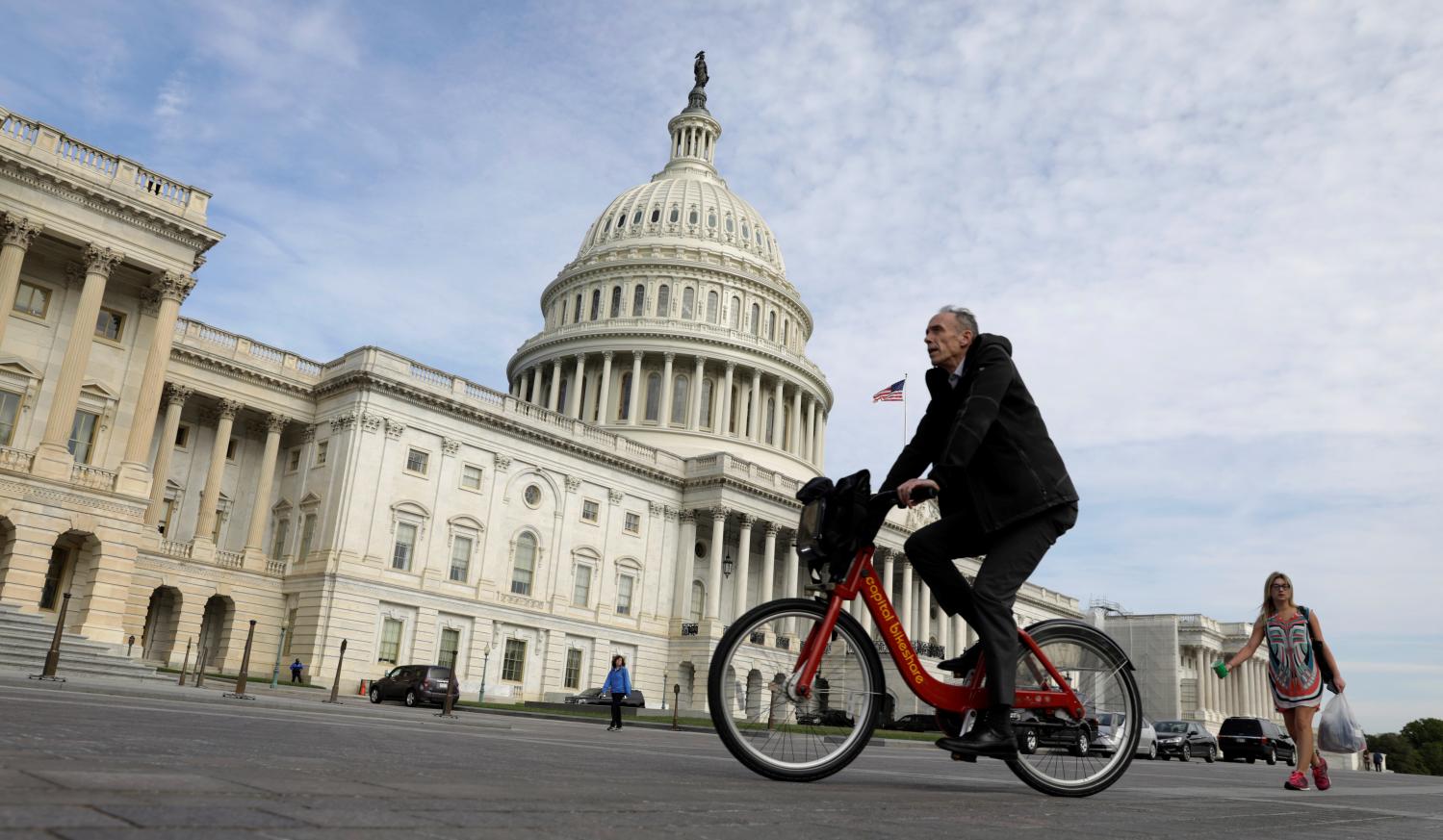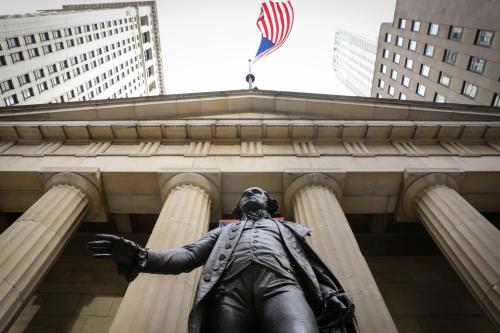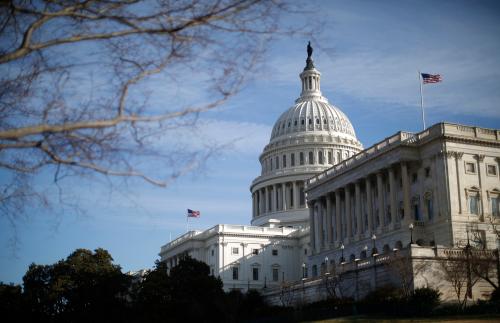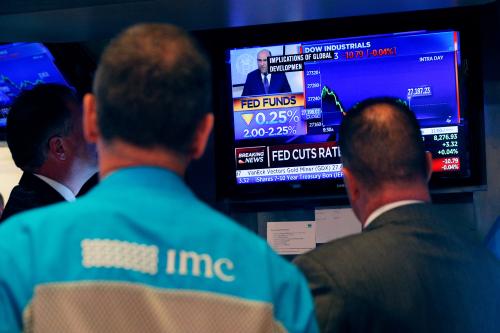This report was originally published in Tax Notes Federal on August 5, 2019.
This report provides new estimates and perspectives on the federal budget outlook. The Congressional Budget Office projects a debt-to-GDP ratio of 92 percent by fiscal 2029 under current law, up from 78 percent today.
We start with that projection and build on it in three ways. First, under a current policy scenario similar to the CBO’s alternative fiscal scenario — in which policymakers routinely extend temporary provisions, as they have in the past — we project a debt-to-GDP ratio near 106 percent in 2029, which would be just below the highest ratio in U.S. history.
Second, we highlight that the currently strong economy is masking the underlying fiscal problem. If the CBO and current policy projections hold, the next 10 years will include the first sustained period in U.S. history with sizable full-employment deficits, which will exceed 4 percent of GDP under current law and rise to 7 percent of GDP under current policy.
Third, after the coming decade, fiscal pressures will mount, with the debt-to-GDP ratio rising to 194 percent under current policy by 2049. The fiscal gap is substantial; to ensure the debt-to- GDP ratio 30 years from now does not exceed the current level would require a combination of immediate and permanent non-interest spending cuts or tax increases totaling 3.9 percent of GDP. In 2019 this would be equivalent to a 21 percent cut in non-interest spending, a 47 percent increase in income tax revenue, or a 24 percent increase in all tax revenue. Over the longer term, the required adjustments are even larger.
Growth in annual net interest payments — attributable in part to projections of rising interest rates — accounts for a significant part of the rising debt projection. However, even if interest rates remain unchanged over the next 30 years, the debt-to-GDP ratio in 2049 would rise to 156 percent and the fiscal gap would be 3.2 percent of GDP. That is, there is a significant federal fiscal imbalance even if interest rates stay low. This is reflected in persistent and rising primary deficits, in the range of 3 to 5 percent of GDP over the next 30 years under current policy.
There is a significant federal fiscal imbalance even if interest rates stay low.
Sustained federal deficits and rising federal debt that are used to finance consumption or transfer payments in normal times (rather than to finance investments) have numerous problematic effects. First, they will reduce future national income. This can occur because deficits raise interest rates and crowd out future investment, reducing future production and income. But an increase in interest rates is not necessary to generate the decline in future national income. If a rise in deficits is financed by capital inflows (that are sufficiently large so that interest rates do not rise), future investment and production won’t fall, but future national income — that is, Americans’ claims on that production — will decline as more of the proceeds of production will have to be directed to repay foreign creditors.
Sustained deficits and rising long-term debt also make it more difficult to garner political support to conduct routine policy, address major new priorities, or deal with the next recession or emergency. Third, in those ways and by requiring future tax increases or spending cuts, the fiscal trajectory imposes burdens on future generations. Fourth, the current fiscal trajectory raises the possibility of a financial crisis, even if such an outcome remains a low-probability event.
One argument for more debt and less austerity during the Great Recession and the aftermath was summarized by a quote from John Maynard Keynes: “The boom, not the slump, is the right time for austerity at the Treasury.” Well, this is the boom. If policymakers do not address the fiscal imbalance now, the problem will become more difficult because of the growing size of the deficit and debt and the increased economic costs and political difficulty of enacting spending cuts or tax increases in less favorable times. Addressing the fiscal imbalance now does not necessarily require substantial, immediate cuts in spending or increases in taxes; it could instead be structured to provide gradual, phased-in changes.









